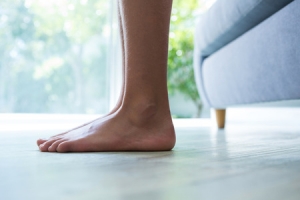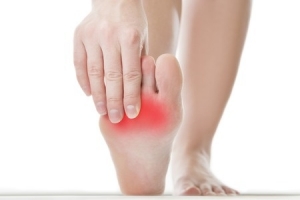Connect With Us
Blogs
Displaying items by tag: flatfeet
Flatfeet: Tricky to Track Down and Treat
At Superior Foot & Ankle Care Center we see patients whose symptoms don’t immediately point to the cause of the problem. Flatfeet can be one of those conditions. Patients with flatfeet may experience one or all of the following symptoms:
- Pain in the foot, ankle, heel and/or lower leg
- Lack of flexibility in the foot
- General aching or fatigue in the foot or leg
- Swelling in the midfoot area
- Overpronation
- Shin splints
- Lower back, knee or hip pain
Finding the Cause
There are several types of flatfeet. They share one defining characteristic: a partial or total collapse or loss of the arch of the foot. Some possible causes of flatfeet include:
- Heredity
- Abnormal development of the arch during childhood
- Trauma or injury
- A gradual loss of arch over time due to aging, weight gain or medical conditions such as arthritis
This deformity may be present in varying degrees and therefore result in varying severity and kinds of symptoms. If you are experiencing any of the above symptoms, it’s a good idea to make an appointment at our Long Beach office so that our podiatrists, Dr. Victoria Foley and Dr. Constance Omelas can examine your foot.
To diagnose flatfoot, the foot and ankle surgeon will examine your foot and observe how the arch looks when you are standing and sitting. Most likely x-rays will be ordered to determine the severity of the deformity.
Treatment Options
How to best treat flatfoot will depend on how advanced your condition is and the symptoms you are experiencing. Some patients with flatfoot experience no symptoms and the foot doctor may just advise you on ways to prevent worsening of the flatfoot and what you can expect in the future. For those with symptoms, a number of non-invasive treatments exist including modifying your footwear, using custom orthotics, and physical therapy.
If you believe you may have flatfeet, contact us for an evaluation today by calling: (562) 420-9800.
Excess Pressure Can Be a Pain in the Foot
Our feet are pretty forgiving. They take us where we need to go and help us stay fit by enabling us to participate in sports and exercise activities. They even accept being crammed into uncomfortable shoes now and then for the sake of fashion. However, we can push it too far. When an excessive amount of pressure is put on our feet we are susceptible to many foot disorders. One of them is metatarsalgia. This condition’s telltale sign is pain in the ball of the foot where the five long metatarsal bones end. At Superior Foot & Ankle Care Center we find that there are many ways that patients put too much pressure or uneven pressure on this part of the foot, including:
- Standing or walking for long periods of time on very hard floors or ground
- Frequently participating in weight-bearing activities such as running, dancing or basketball
- Wearing shoes that fit improperly or spending too much time in shoes with very rigid soles such as work boots or hiking shoes
- Gaining weight
Sometimes, metatarsalgia is caused by conditions that are beyond a patient’s control such as arthritis, flatfeet (overpronation), an injury or foot deformity. This condition is also more likely to occur with age as the fat pads on the bottom of our feet naturally begin to wear down.
Treating Metatarsalgia
If our podiatrists, Dr. Victoria Foley and Dr. Constance Omelas, diagnose metatarsalgia the first step will be to reduce the pain and discomfort that you are experiencing. This can usually be accomplished with rest, icing and anti-inflammatory medications. The next step will be to deal with the root cause of the condition. Depending on what the source of foot pressure is, the foot doctor may recommend changing the types of shoes you wear, losing weight, treating an existing condition or using a custom orthotic device to alleviate inflammation to the affected area.
Be good to your feet by not waiting to seek medical treatment if you are experiencing pain, discomfort or other unusual symptoms. Contact our Long Beach office for an appointment by calling: (562) 420-9800.


